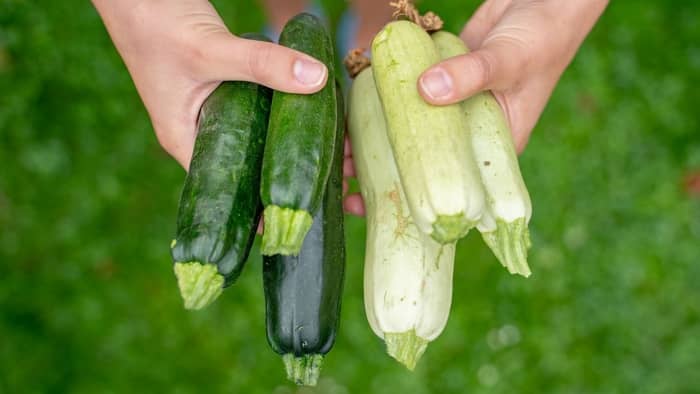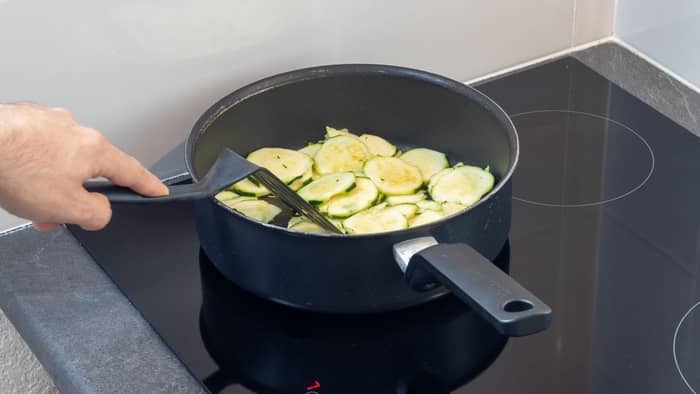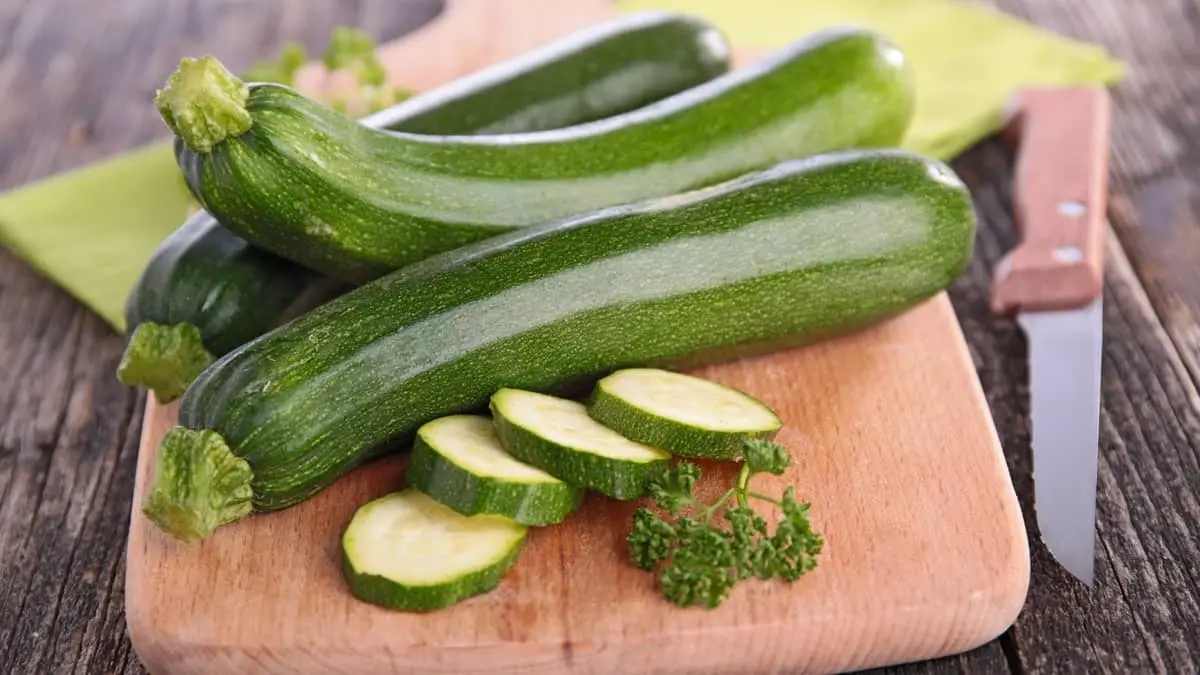Last Updated on January 24, 2023 by admins
Calabacita squash is a familiar favorite in authentic Mexican dishes- so what is the difference between calabacita squash vs zucchini? There are many words that people use for calabacita squash, including Mexican squash.
After this article, you will know the differences and similarities between these two squashes as well as what they are used for.
Table of Contents
What Is Calabacita Squash?
Calabacita squash is a delicious summer squash that varies in color. It is also known as Mexican green squash and has a tangy and delicious flavor. The texture of this squash is hard, while also being soft enough to bite into.
This type of squash greatly resembles a long and thin cucumber. The color is also very similar. Although most summer squashes are dark and vivid green, some varieties are golden brown or orange. These varieties, however, have different tastes.
Calabacita squash is a zucchini, often eaten and growling in Mexico. They thrive in hot climates and grow on vines. The vines extend for feet and need room to climb. The taste of a calabacita squash is mild and the texture is soft with also an added crunch.

What Dishes Use Calabacita Squash Vs zucchini?
Some people like to use calabacita squash vs zucchini, also known as Mexican squash vs zucchini, without realizing that these two things are the same! In Mexico, calabacita simply refers to little or mini zucchini. These fruits are technically part of the squash family and grow in vines, just like other pumpkins and summer squashes.
Now that we have basic information about calabacita squash vs zucchini, we can dive deep into the dishes that utilize this delicious summer squash. The flavors and texture of the Mexican green squash goes well together, including in authentic Mexican dishes.
Cheese calabacita is the most common dish that uses Calabacita squash vs zucchini. It is a delicious creation that uses two forms of summer squash. One form is the circular squash that resembles a miniature pumpkin. In a large skillet, you can add oil and various vegetables.
It is common to use large slices of zucchini, golden calabacita squash, and cheese in this dish. Although these are the most common ingredients, you can always add your own twist!
Different Types of Calabacita Squash
Did you know that there are different types of calabacita squashes? Not all of them are considered zucchinis ether and the flavor of each changes based on the shape and ripeness.
The most common types of calabacita squash used in authentic Mexican cooking are:
- long little squash
- round little squash

What Is The Difference Between Zucchini And Squash?
Although it is tempting to think that these two squashes are different, they aren’t! Mexican summer squash is simply another name for Zucchini. However, there are many varieties of zucchini and they are not used exclusively in Mexican food.
Different Ways To Cook Squash And Zucchini
Thankfully, you can eat squash and zucchini raw, including the peel. In fact, the outer layer of these two types of fruits are delicious and filled with nutrients and hydrating properties. You can either cut these fruits into a salad or cook them into a dish.
Since squash and zucchini are flexible, durable, and squishy, you can cook them using minimal ingredients like oil. Also, they do well sautéed and baked! Personally, I like using summer squash and zucchini in the oven when I am making a casserole or cheese calabacita and I don’t wait to take long.
You can also use a skillet with light oil to cook and grill these vegetables. You can change the taste depending on the seasonings and additional vegetables you cook the Mexican green squash with.

How To Grow Your Own Mexican Green Squash
Are you interested in growing your own food? I do have to warn you that the process to grow your own Mexican green squash takes time! You will have to wait months until you start seeing a viney plant that produces flowers. Without flowers, squash cannot emerge.
During this growing process, you will need to start with a seed. You can find Mexican green squash seeds in your local garden store. If not, there are hundreds of reputable seed catalogues and companies online that can ship you seeds to grow along with detailed instructions.
To germinate the seeds and get the plant to grow roots, you can place it in water. It is best to use a zip lock bag and a paper towel. A wet paper towel will give the seed enough water to germinate, while the humidity created by the bag increases the speed the seed roots.
In 5-12 days, the seeds should root. Once this occurs, you can add the seeds to a potting mix. Purchase a potting mix that is full of nutrients and loose enough to allow the roots to stretch and grow.
It is best to grow these large squash plants outside, but if you do not have the room, don’t worry you can always use a container! Add a climbing trellis or cage, often used with tomatoes to the general area. As the vine grows, train the vine to trail. After a few weeks, bright large flowers will appear.
How to Harvest Calabacita Squash Vs zucchini
Before we can harvest calabacita squash, it is important to fertilize the plant and make sure the flowers are pollinated. The squash emerges from the flowers the plant produces.
How do you know when the Mexican green zucchini is ready? The calabacita squash vs zucchini argument extends to harvesting time as well. The zucchini varieties often eaten in American dishes require an early harvest. However, you have to be particular about when to harvest calabacita because they ripen fast.
Conclusion
Now that you have read this blog, you no longer need to wonder about Calabacita Squash vs zucchini! What do you think? Have you learned anything new or valuable about this special Mexican green squash? Let us know in the comment section below.
Also, share this article with anyone you think would like to learn about calabacita squash in authentic Mexican culture.
Nixza is a passionate chef who loves to cook Mexican food. She has been cooking since a young age and has developed a deep understanding of the flavors and techniques of Mexican cuisine. She strives to bring the flavors of Mexico to life in every dish she creates. Nixza loves to experiment in the kitchen and is always looking for new recipes to add to her repertoire. Whether it‘s a traditional dish or something more modern and inventive, Nixza loves to share her passion for Mexican cuisine with friends and family. Her delicious creations have earned her a loyal following of admirers, who enjoy her unique and flavorful dishes. Nixza is passionate about making sure her food is both delicious and healthy, and she takes great pride in the quality of her recipes.
